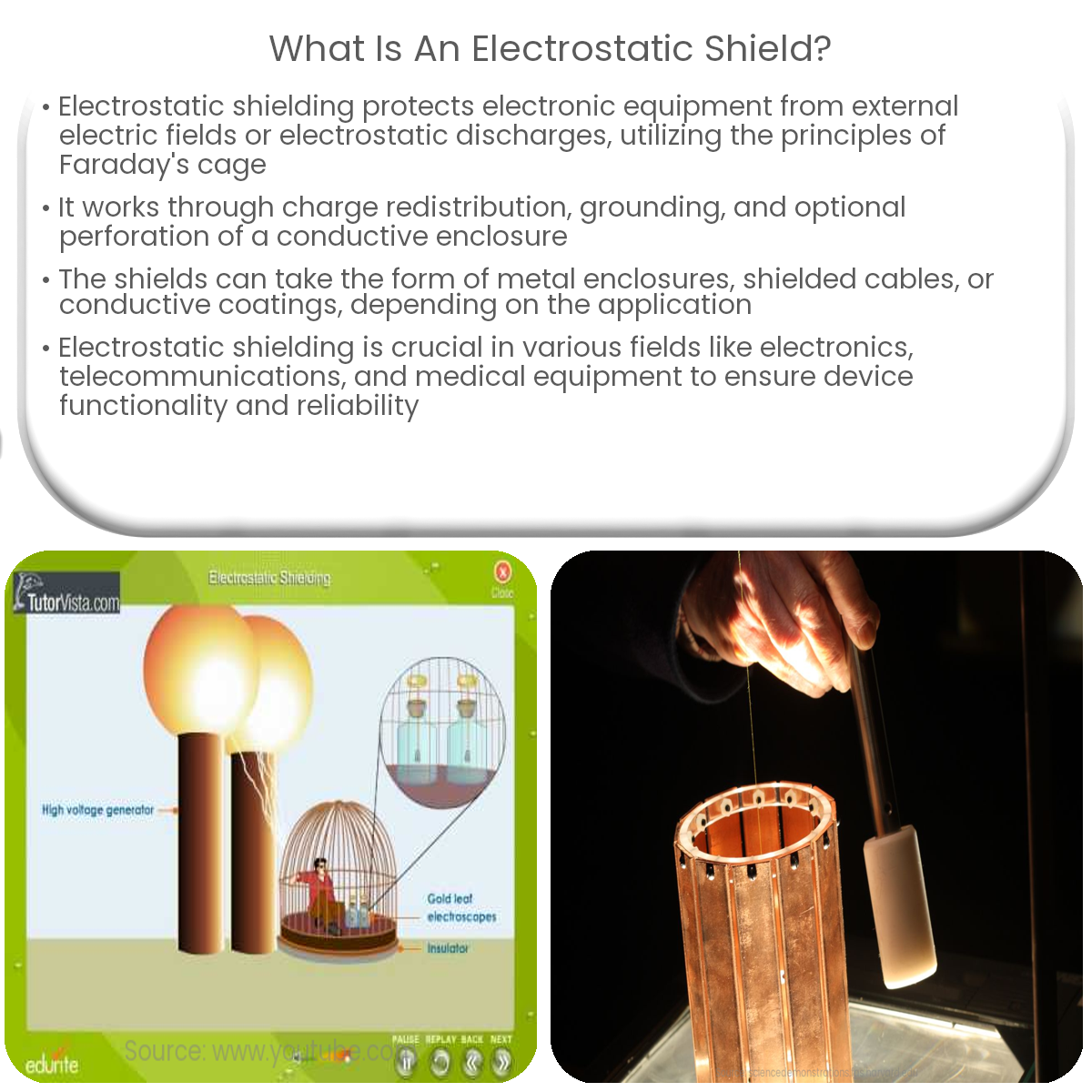Electrostatic shielding protects sensitive electronics from external electric fields using conductive enclosures or coatings, based on Faraday’s cage principles.
Understanding Electrostatic Shielding
Electrostatic shielding is a technique used to protect sensitive electronic equipment and components from external electric fields or electrostatic discharges. This article provides an overview of electrostatic shielding, its working principles, and applications.
Principles of Electrostatic Shielding
The fundamental concept behind electrostatic shielding is Faraday’s cage, named after the scientist Michael Faraday, who demonstrated its principles in the 19th century. Faraday’s cage is a closed conductive enclosure that redistributes external electric fields around its surface, thereby nullifying the electric field inside the enclosure. The key principles of electrostatic shielding include:
- Charge Redistribution: When an external electric field interacts with a conductive shield, the free charges in the conductor rearrange themselves to counteract the field, effectively canceling the electric field inside the enclosure.
- Grounding: Connecting the conductive enclosure to the ground helps to dissipate any charge buildup on the shield, further enhancing the shielding effectiveness.
- Perforation: It is possible to create a partially perforated shield that still provides effective electrostatic shielding. The size and distribution of the perforations must be smaller than the wavelength of the interfering electric fields for effective shielding.
Types of Electrostatic Shields
Electrostatic shields come in various forms, depending on the specific application and requirements. Some common types of shields include:
- Metal Enclosures: Complete or partially perforated metal enclosures, like those used for electronic devices and equipment, provide effective electrostatic shielding.
- Shielded Cables: Sensitive signal cables often have a conductive shield layer, typically braided or foil, wrapped around the inner conductors to minimize interference.
- Coatings: Conductive coatings, such as metal or conductive paint, can be applied to non-conductive enclosures to provide electrostatic shielding.
Applications of Electrostatic Shielding
Electrostatic shielding is used in various industries and applications, including:
- Electronics: Protecting sensitive electronic components and devices from electrostatic discharges or external electric fields, ensuring their proper functioning and longevity.
- Telecommunications: Shielding communication cables and equipment from electromagnetic interference, maintaining signal integrity and reducing noise.
- Medical Equipment: Shielding medical devices from external electric fields to ensure accurate measurements and prevent interference with sensitive components.
In conclusion, electrostatic shielding is a critical technique for protecting sensitive electronic equipment and components from the effects of external electric fields, ensuring their proper functioning and reliability.


